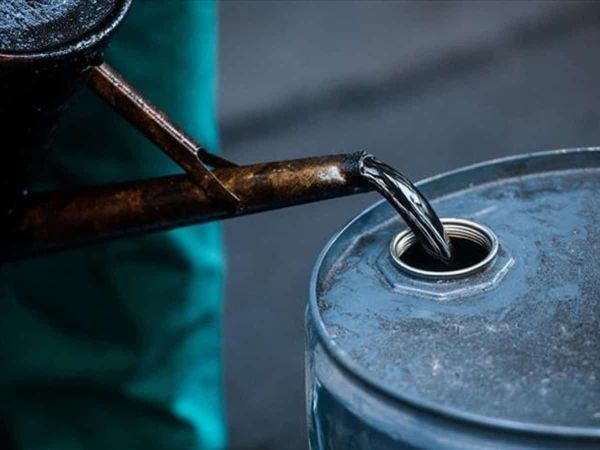
New Delhi: Nayara Energy – part-owned by Russian oil giant Rosneft PJSC and blacklisted by the European Union in July – is facing difficulties in securing non-Russian crude supplies for a second month in a row as western shipping companies refused to ferry oil for it, ship tracking data showed.
Nayara, which has already cut down the run rate of its 4,00,000 barrels a day oil refinery at Vadinar in Gujarat, remains heavily reliant on Russian barrels since August.
The company got about 2,42,000 barrels per day (bpd) of Russian oil, possibly in ships arranged by Moscow, in August, and another 3,32,000 bpd in the first half of September, preliminary data by global trade analytics firm Kpler showed.
It did not get any crude oil, which is converted into fuels like petrol and diesel at the refinery, from other key sources, such as Iraq and Saudi Arabia, in both August and September. Iraq and Saudi Arabia had supplied about 1,20,000 bpd of crude to Nayara in July.
“Nayara’s situation remains challenging under the weight of ongoing sanctions, which have reinforced its reliance on Russian barrels. Post-sanctions, the refinery has struggled with compliance, shipping, payment channels, and lower crude imports,” said Sumit Ritolia, Lead Research Analyst (Refining & Modeling) at Kpler.
These issues, however, “are gradually being resolved, and we expect operations to move closer to its economical or rated capacity”, he said.
In July, the EU banned imports of petroleum products made from Russian crude starting in January 2026 and lowered its oil price cap. It sanctioned Russian and international companies managing shadow fleet vessels, traders of Russian crude oil, and a major customer of the shadow fleet – the Vadinar refinery, where Rosneft holds a 49.13 per cent stake.
The sanctions meant that the non-Russia-backed shipping fleet refused to transport oil, and Western insurance companies declined to provide cover for the barrels.
EU sanctions had led to nearly half a dozen top executives of Nayara, including the CEO, resigning from the company.
Russian barrels continued to flow to India in September despite growing pressure from the US to shun supplies from Moscow to get President Vladimir Putin to agree to end the Ukraine war.
According to Kpler, Russia remains India’s largest crude supplier, accounting for over one-third of total imports.
“Russian crude loadings in August and September should be viewed in this broader context: while intake has appeared steady, this reflects the timing of contracts rather than immediate reactions to external pressures. Since deals are typically fixed 6-8 weeks in advance, August and early September arrivals stem from agreements made in July. The true impact of new tariffs, payment challenges, or shipping frictions will only begin to surface from late September onwards or into October,” Ritolia said.
Supplies from West Asia, including Iraq, Saudi Arabia and UAE, remained strong in September, indicating India’s efforts to balance between discounted Russian grades and reliable traditional supplies to ensure security and avoid overexposure to geopolitical shocks.
Russian crude loadings to India in August and September are tracking at around 1.45 million bpd in August and 1.3 million bpd in September (till September 12), lower than the 1.774 million bpd average across the first seven months of 2025.
These figures may still change, as several vessels currently bound for Port Said could update their final destinations while transiting the Suez Canal – a key route, with all Russian flows to India in July passing through Suez.
Cargoes loaded in August are expected to discharge in September and October, and vessel tracking in the coming weeks will provide more clarity.
According to Kpler, there has been an uptick in undisclosed cargoes departing Russian ports. Many of these tankers discharged their last two to three shipments in India, suggesting continued strong flows, although diversions to other Asian buyers remain possible.
“Overall, regarding September buying, it’s still dynamic, but we’re seeing a continuation of August trends with a focus on diversification,” Ritolia said.
India, long reliant on Middle Eastern crude, sharply increased oil imports from Russia following the invasion of Ukraine in February 2022. Attracted by steep discounts on Russian barrels – driven by Western sanctions and reduced European demand – Indian refiners ramped up purchases from under 1 per cent to around 40 per cent within months.
Ritolia did not see any abrupt pivot away from Russia. “Indian refiners are unlikely to suddenly abandon Russian supply. Greater diversification is expected, as refiners balance affordability with energy security.”
Russian barrels remain the cheapest option in India’s basket (a Russian barrel is around USD 3-5 per barrel cheaper than other sources on a landed cost basis), and without a formal directive from New Delhi, refiners are unlikely to leave even a USD 1 a barrel discount unutilised.
“For now, it remains business as usual – albeit with greater caution and a sharper focus on diversification as energy security becomes paramount,” he added.